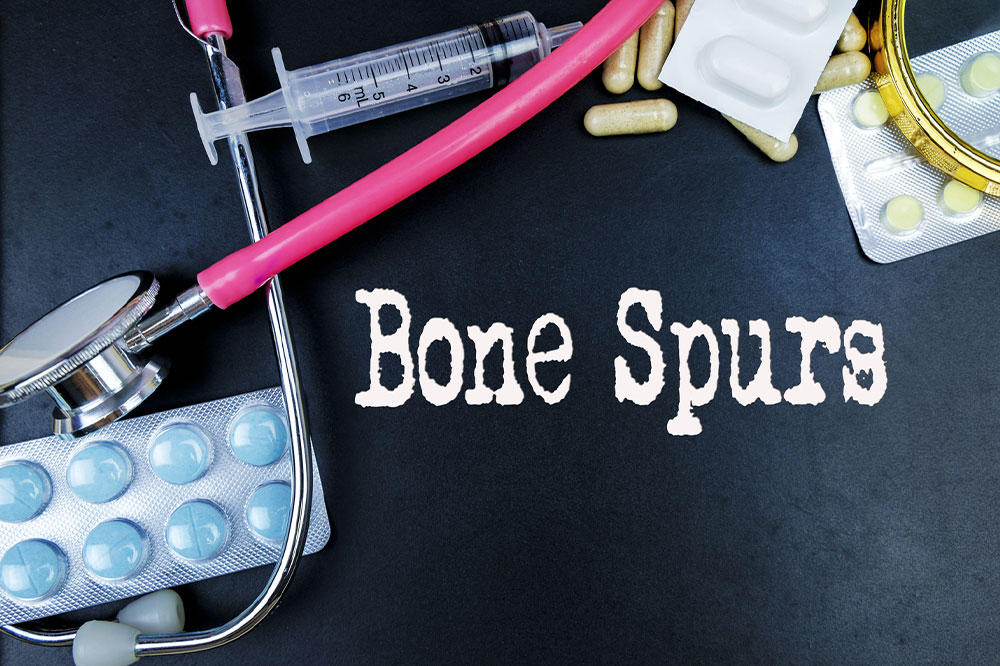Comprehensive Guide to Managing Bone Spurs Effectively
This comprehensive guide explores effective strategies for managing bone spurs, highlighting causes, symptoms, treatment options, and preventive measures. It emphasizes the importance of early diagnosis, lifestyle changes, and surgical options when necessary to ensure optimal joint health and relieve discomfort.

Comprehensive Strategies for Managing Bone Spurs Effectively
Bone spurs, medically termed osteophytes, are bony projections that tend to develop around the edges of joints or along bones in the body. These bony outgrowths are often linked with degenerative joint conditions and repetitive joint stress. They are common in areas such as the spine, hips, knees, and heel regions. Understanding the causes, symptoms, and available treatment options for bone spurs is essential for effective management and maintaining quality of life.
Understanding Bone Spurs: Causes and Risk Factors
Bone spurs develop primarily due to prolonged mechanical stress on bones, repetitive movement patterns, or ongoing joint degeneration. Conditions such as osteoarthritis significantly diminish the cartilage that cushions joints, leading to increased friction and pressure on bones. As a biological response, the body attempts to repair and stabilize affected areas by forming extra bone tissue, resulting in osteophyte formation. Besides osteoarthritis, other contributing factors include tendinitis, plantar fasciitis, Diffuse Idiopathic Skeletal Hyperostosis (DISH), and ankylosing spondylitis. These conditions often cause ligament and tissue damage, which can promote spur development. Recognizing symptoms early, such as persistent joint pain, swelling, or stiffness, facilitates timely intervention.
Key Symptoms and When to Seek Medical Advice
Common symptoms associated with bone spurs include localized joint pain, swelling, reduced range of motion, tenderness, and sometimes nerve-related symptoms like tingling or numbness if nerves are compressed. While some bone spurs remain asymptomatic and are discovered incidentally during imaging tests, others pose significant discomfort and functional impairment. If you experience persistent or worsening joint pain, especially accompanied by swelling or nerve symptoms, it is crucial to consult a healthcare professional promptly. Early diagnosis can prevent further joint deterioration and facilitate effective treatment planning.
Effective Treatment Options for Bone Spurs
The management of bone spurs depends largely on the severity of symptoms and the specific joint involved. Mild cases often respond well to conservative measures, whereas severe cases may require surgical intervention. Non-invasive treatments aim to reduce inflammation, relieve pain, and restore joint mobility.
Medications: Over-the-counter non-steroidal anti-inflammatory drugs (NSAIDs) such as ibuprofen or naproxen are commonly prescribed for 4 to 6 weeks to manage inflammation and pain. In some cases, corticosteroid injections are administered directly into the joint or affected area under imaging guidance to provide rapid relief.
Physiotherapy: Targeted physiotherapy can significantly improve joint function. Techniques include gentle stretching, ultrasound therapy, massage, and targeted exercises that enhance flexibility and strengthen surrounding muscles, thereby reducing stress on the affected joint.
Cold and Heat Therapy: Applying cold packs can reduce swelling, while heat therapy can loosen stiff joints and promote blood flow.
Assistive Devices: Use of braces, orthotics, or supportive footwear can help offload pressure from affected joints, reducing symptoms and improving mobility.
Minimally Invasive and Surgical Treatments
For cases where conservative treatments fail to provide relief, or if nerve compression causes significant symptoms, surgical options are considered. The most common procedure is a laminectomy or excision of the bone spur to decompress nerves and restore function. Advances in surgical technology, such as minimally invasive techniques, enable shorter recovery times and reduced risk of complications. The decision to proceed with surgery hinges on factors such as the patient’s overall health, age, the extent of nerve impingement, and the impact on daily activities.
Preventive Measures and Lifestyle Modifications
While some risk factors for bone spur development are unavoidable, adopting healthy lifestyle habits can significantly mitigate their formation. Maintaining a healthy weight reduces stress on weight-bearing joints, especially hips and knees. Regular low-impact exercise, such as swimming or walking, enhances joint mobility and strengthens muscles that support joints. Proper nutrition rich in anti-inflammatory foods like omega-3 fatty acids, fruits, and vegetables supports joint health.
Additionally, avoiding repetitive motions that strain joints excessively and ensuring good posture can reduce the risk of spur formation. If you engage in activities involving repetitive joint movements, taking frequent breaks and using ergonomic tools can help prevent joint overuse and injury.
Importance of Early Diagnosis and Individualized Treatment
Early detection of bone spurs plays a vital role in preventing significant joint damage. Medical evaluations, including X-rays, MRIs, and physical examinations, help determine the location and severity of bone growths. Based on these findings, healthcare providers tailor treatment plans to each patient’s specific needs, maximizing the chances of successful outcomes.
Open communication with your healthcare provider, adherence to prescribed treatments, and lifestyle adjustments form the cornerstone of effective management. Embracing a proactive approach ensures better control over symptoms and a higher quality of life.
In conclusion, managing bone spurs involves a comprehensive understanding of their causes, symptoms, and available treatment options. Combining conservative measures, lifestyle modifications, and surgical interventions when necessary can lead to significant symptom relief and improved joint health. Regular medical check-ups and early intervention are essential in maintaining joint functionality and preventing further degeneration.





